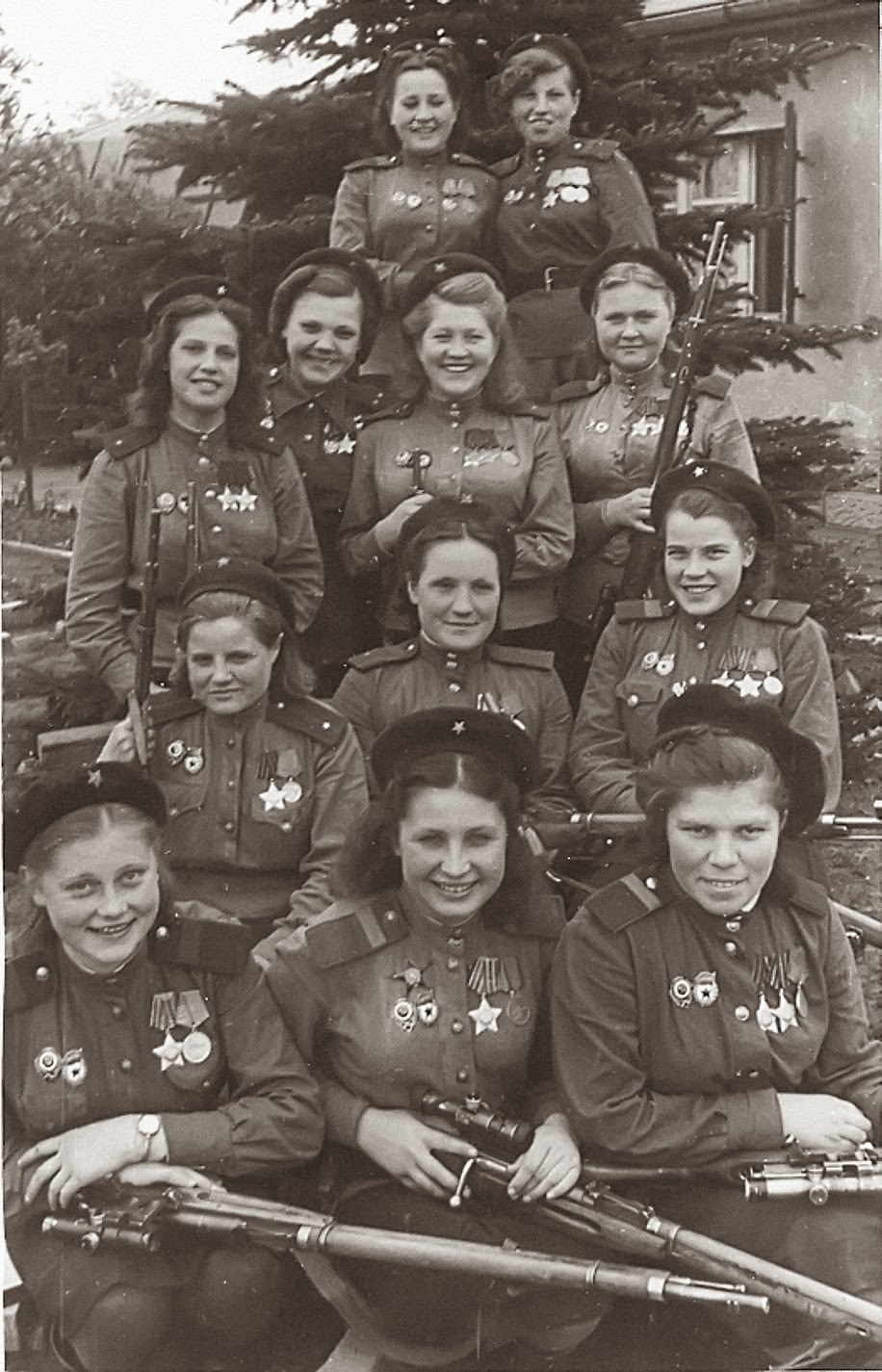The snipers in the picture:
- First row – Guard Staff Sergeant, VN Stepanova: 20 kills, Guard Sgt JP Belousova: 80 kills, Guard Sgt AE Vinogradova: 83 kills.
- Second row – Guard Lieutenant EK Zhibovskaya: 24 kills, Guard Sgt KF Marinkin: 79 kills, Guard Sgt OS Marenkina: 70 kills.
- Third row – Guard Lieutenant NP Belobrova: 70 kills, Lieutenant N. Lobkovsky: 89 kills, Guard Lieutenant VI Artamonova: 89 kills, Guard Staff Sergeant MG Zubchenko: 83 kills.
- Forth row – Guard Sergeant, NP Obukhova: 64 kills, Guard Sergeant, AR Belyakova 24 kills.
The total number of confirmed kills: 775. Photo was taken in Germany, May 4, 1945.
Because of chronic problems in finding the manpower to fulfill military and industrial tasks, the Soviet government recruited some 7.75 million women, of whom 800,000 served in the military.
Sniping was a precision role, which many women soldiers performed with expertise. It is estimated that in 1943 there were more than 2,000 female snipers in the Soviet armed forces. Female snipers have been credited with more than 12,000 confirmed kills.
The Soviet Union used women for sniping duties extensively and to great effect, including Nina Alexeyevna Lobkovskaya and Ukrainian Lyudmila Pavlichenko (who killed over 300 enemy soldiers). The Soviets found those sniper duties fit women well, since good snipers are patient, careful, deliberate, can avoid hand-to-hand combat, and need higher levels of aerobic conditioning than other troops.
Women were regarded as having the skills and nerves required for accurate marksmanship. Notwithstanding male skepticism, Major General Morozov, “the father of the sniper movement”, attributed superior female marksmanship to the fact that “a woman’s hand is more sensitive than is a man’s. Therefore when a woman is shooting, her index finger pulls the trigger more smoothly and purposefully”.
The most successful Soviet use of snipers during the Second World War was during their defensive stage of the war (1941–1943), after which the advantage of defense shifted to the German side and German snipers became a real danger to the advancing Soviets.
Soviet military doctrine used snipers for providing long-distance suppressive fire and for eliminating targets of opportunity, especially leaders, because during World War II, Soviet military leaders and combat theorists found that military organizations had difficulty replacing experienced non-commissioned officers and field officers during times of war.
They also found that the more expensive and less rugged sniper rifles could match the cost-effectiveness of a cheaper assault rifle given good personnel selection, training, and adherence to doctrine.
The three most common sniper rifles employed by the Soviet Union were the Mosin-Nagant, the Tokarev SVT-40, and later, the SVD (1958); the first purpose-built designated marksman’s rifle.
